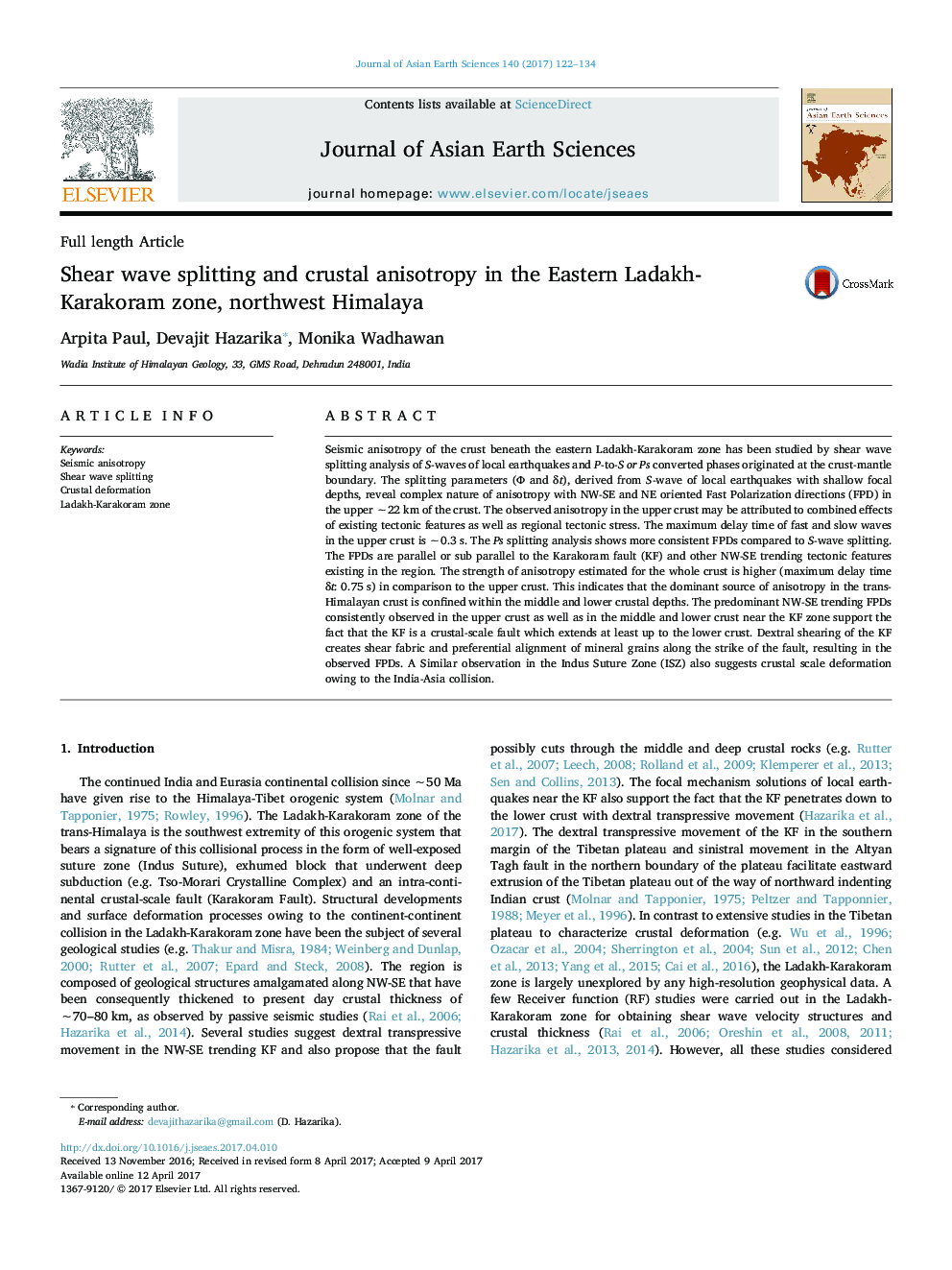| کد مقاله | کد نشریه | سال انتشار | مقاله انگلیسی | نسخه تمام متن |
|---|---|---|---|---|
| 5785905 | 1640331 | 2017 | 13 صفحه PDF | دانلود رایگان |
- Crustal anisotropy in the eastern Ladakh-Karakoram zone is inferred through shear wave splitting analysis.
- The fast polarization direction largely follows the NW-SE strike of geo-tectonic features.
- The Dominant source of anisotropy is confined within the middle and lower crust near the Karakoram Fault Zone.
- The Karakoram Fault is inferred as a crustal-scale fault.
Seismic anisotropy of the crust beneath the eastern Ladakh-Karakoram zone has been studied by shear wave splitting analysis of S-waves of local earthquakes and P-to-S or Ps converted phases originated at the crust-mantle boundary. The splitting parameters (Φ and δt), derived from S-wave of local earthquakes with shallow focal depths, reveal complex nature of anisotropy with NW-SE and NE oriented Fast Polarization directions (FPD) in the upper â¼22 km of the crust. The observed anisotropy in the upper crust may be attributed to combined effects of existing tectonic features as well as regional tectonic stress. The maximum delay time of fast and slow waves in the upper crust is â¼0.3 s. The Ps splitting analysis shows more consistent FPDs compared to S-wave splitting. The FPDs are parallel or sub parallel to the Karakoram fault (KF) and other NW-SE trending tectonic features existing in the region. The strength of anisotropy estimated for the whole crust is higher (maximum delay time δt: 0.75 s) in comparison to the upper crust. This indicates that the dominant source of anisotropy in the trans-Himalayan crust is confined within the middle and lower crustal depths. The predominant NW-SE trending FPDs consistently observed in the upper crust as well as in the middle and lower crust near the KF zone support the fact that the KF is a crustal-scale fault which extends at least up to the lower crust. Dextral shearing of the KF creates shear fabric and preferential alignment of mineral grains along the strike of the fault, resulting in the observed FPDs. A Similar observation in the Indus Suture Zone (ISZ) also suggests crustal scale deformation owing to the India-Asia collision.
248
Journal: Journal of Asian Earth Sciences - Volume 140, 1 June 2017, Pages 122-134
